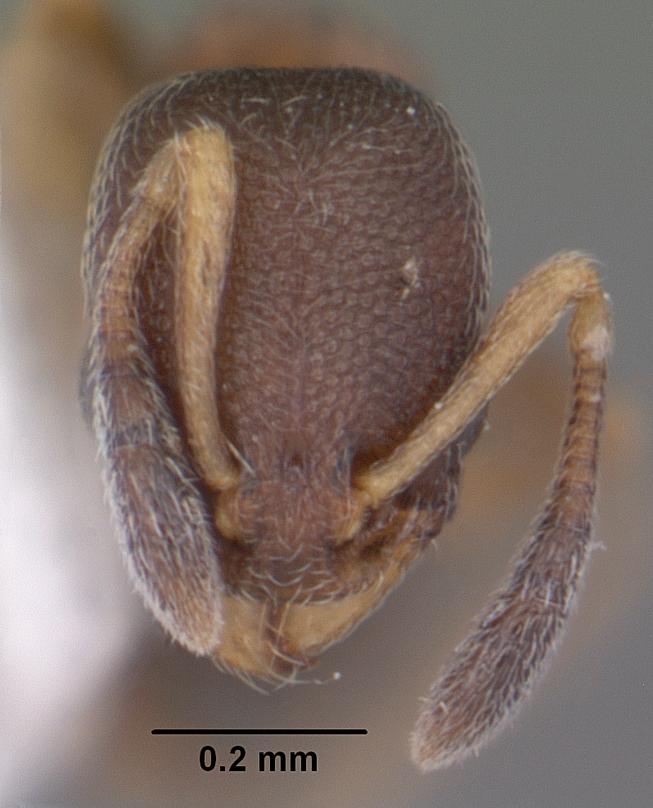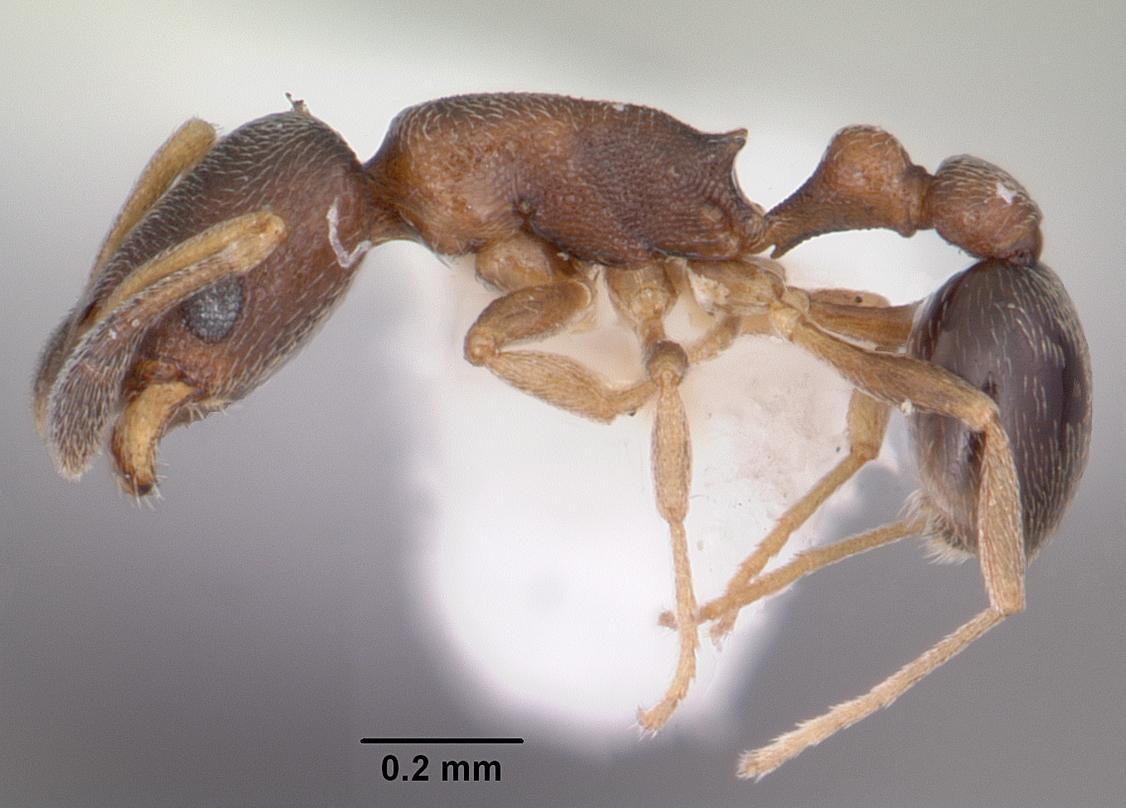Subfamily MYRMICINAE |
|
Cardiocondyla minutior, full face view of a worker (click image to enlarge). Photo courtesy of http://www.antweb.org/ |
Cardiocondyla minutior, full face view of a worker (click image to enlarge). Photo courtesy of http://www.antweb.org/ |
Introduction Identification According to Seifert (2003), specimens of this species from the US have been misidentified as C. nuda. Original Description Biology and Economic Importance Life Cycle: This species, similar to others in the genus, produces ergatoid males in addition to alate males. Ergatoid males are known to fight on another to the death for exclusive mating (Terayama, 1999). Native Range: IndoMalaysia, Asia Distribution United States: Alabama? (MacKay, 1995; identified as C. nuda, but likely C. minutior), Georgia? (Smith, 1979; identified as C. nuda, but likely C. minutior), Louisiana (Dash, 2005; identified as C. nuda, but likely C. minutior), and Florida (Seifert, 2003). Literature Cited Dash, S. T. 2005. Species Diversity and biogeography of Ants (Hymenoptera: Formicidae) in Louisiana, with Notes on their Ecology. M.S. Thesis, Louisiana State University, 290 pp. MacKay, W. P. 1995. New distributional records for the ant genus Cardiocondyla in the New World (Hymenoptera: Formicidae). Pan-Pacific Entomologist 71: 169-172. Seifert, B. 2003. The ant genus Cardiocondyla (Insecta: Hymenoptera: Formicidae) - a taxonomic revision of the C. elegans, C. bulgarica, C. batesii, C. nuda, C. shuckardi, C. stambuloffii, C. wroughtonii, C. emeryi, and C. minutior species groups. Ann. Naturhist. Mus. Wien. B. Bot. Zool. 104(B): 203-338. Smith, D. R. 1979. In Catalog of Hymenoptera in America north of Mexico. Smithsonian Institution Press, Washington D. C. Vol. 2, pp. 1323-1427. Terayama, M. 1999. Taxonomic studies of the Japanese Formicidae, Part 6. Genus Cardiocondyla Emery. Memoirs of the Myrmecological Society of Japan. 1: 99-107. Links AntWeb |
|




